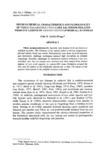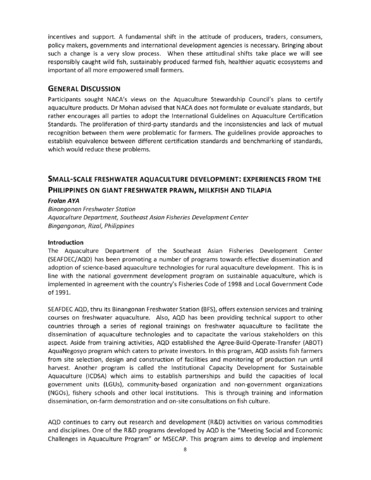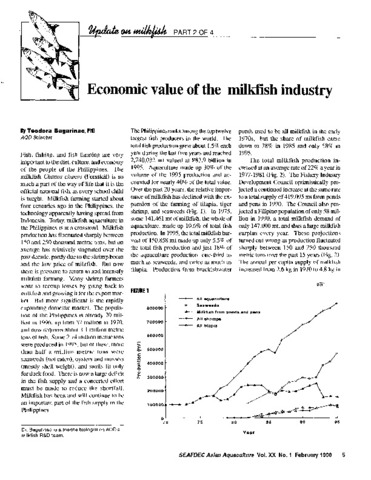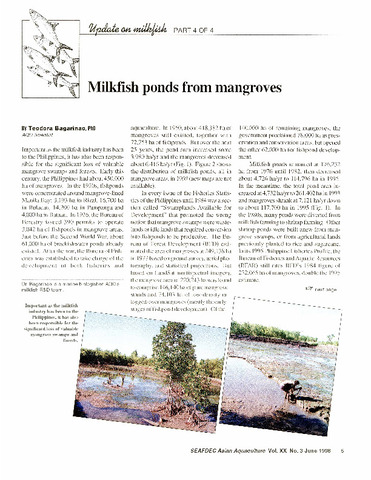Physico-chemical characteristics and pathogenicity of Vibrio Parahaemolyticus-like bacterium isolated from eye lesions of Chanos chanos (Forsskal) juveniles
Share
Abstract
Vibrio parahaemolyticus-like bacteria were isolated from eye lesions of milkfish juveniles. The tolerance of the typical isolate to various temperature, pH and salinity levels was tested. Pathogenicity tests done via both injection and immersion challenge techniques induced high mortalities in milkfish fingerlings. Juveniles challenged by immersion method exhibited a very low mortality rate, but eye lesions were observed and these ranged from various degrees of eye cover opacity, to cataract-like tissue formation around the lens, and the failure of the artificially injured site to heal. The impact of the present observations to the milkfish industry is discussed.
Suggested Citation
Lavilla-Pitogo, C. R. (1991). Physico-chemical characteristics and pathogenicity of Vibrio Parahaemolyticus-like bacterium isolated from eye lesions of Chanos chanos (Forsskal) juveniles. Fisheries Research Journal of the Philippines , 16(1-2), 1-13. http://hdl.handle.net/10862/1343
Subject
Taxonomic term
Collections
- AQD Journal Articles [1249]
Related items
Showing items related by title, author, creator and subject.
-
Small-scale freshwater aquaculture development: Experiences from the Philippines on giant freshwater prawn, milkfish and tilapia
Aya, Frolan (Japan International Cooperation Agency, 2013-12)The Aquaculture Department of the Southeast Asian Fisheries Development Center (SEAFDEC/AQD) has been promoting a number of programs towards effective dissemination and adoption of science-based aquaculture technologies ... -
Economic value of the milkfish industry
Bagarinao, Teodora (Aquaculture Department, Southeast Asian Fisheries Development Center, 1998)A brief description is given of the milkfish (Chanos chanos) farming industry in the Philippines. Over the past 20 years, the relative importance of milkfish has declined with the expansion of tilapia, tiger shrimp and ... -
Milkfish ponds from mangroves
Bagarinao, Teodora (Aquaculture Department, Southeast Asian Fisheries Development Center, 1998)






